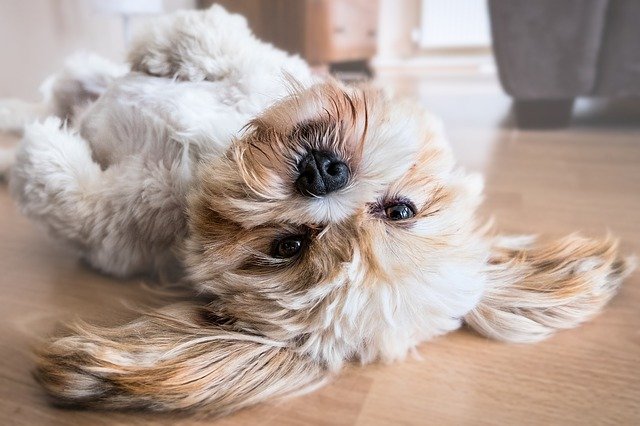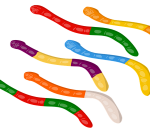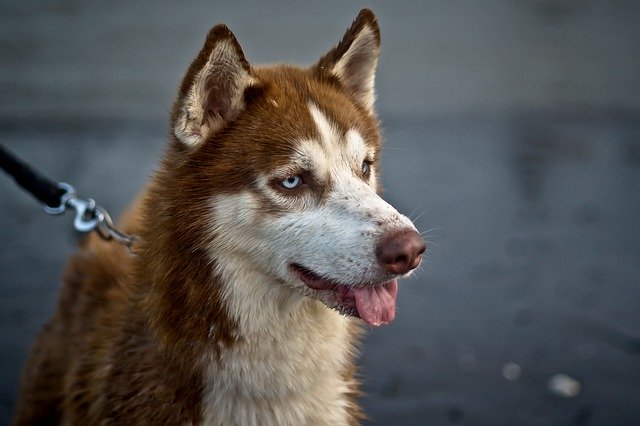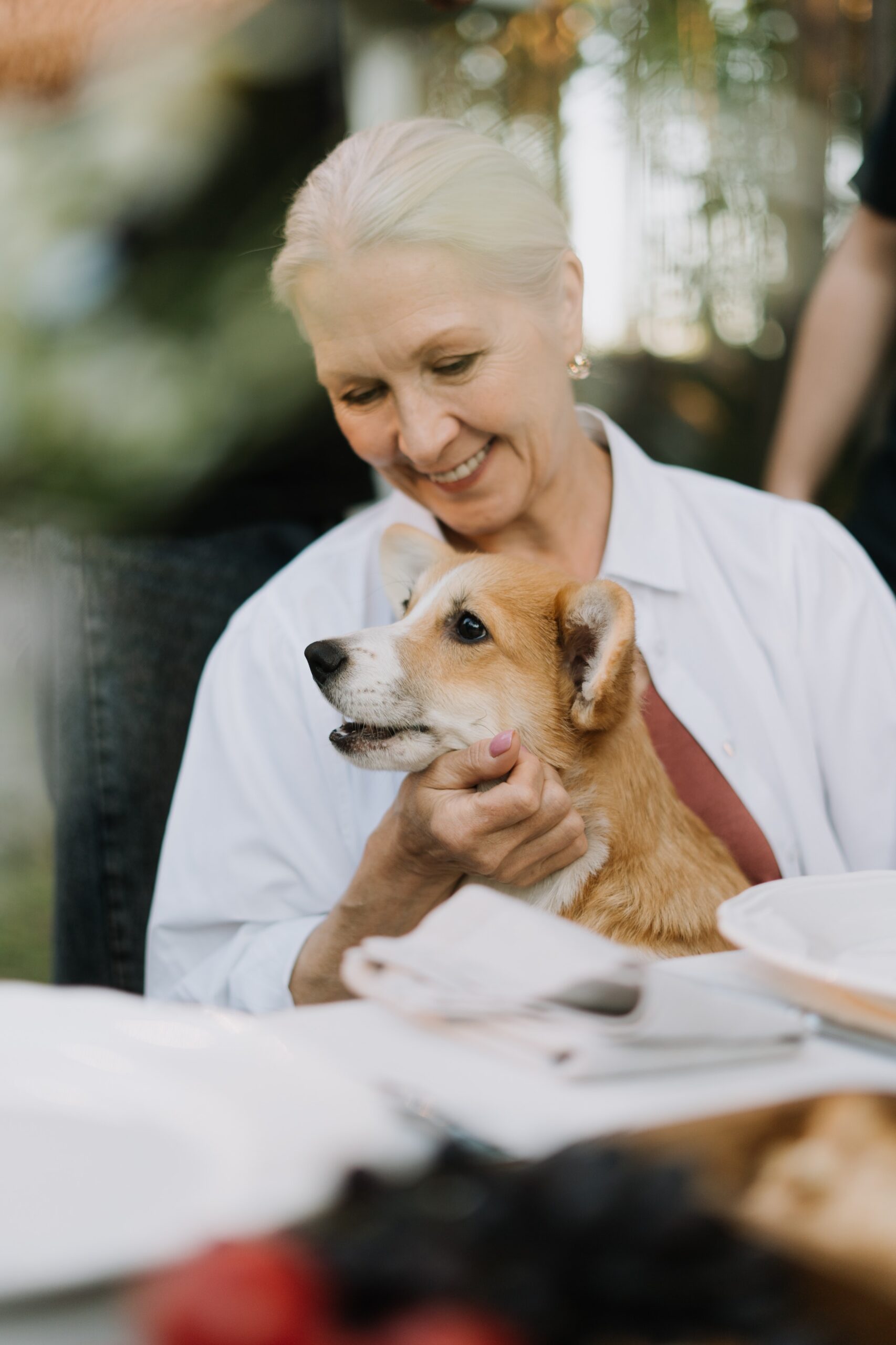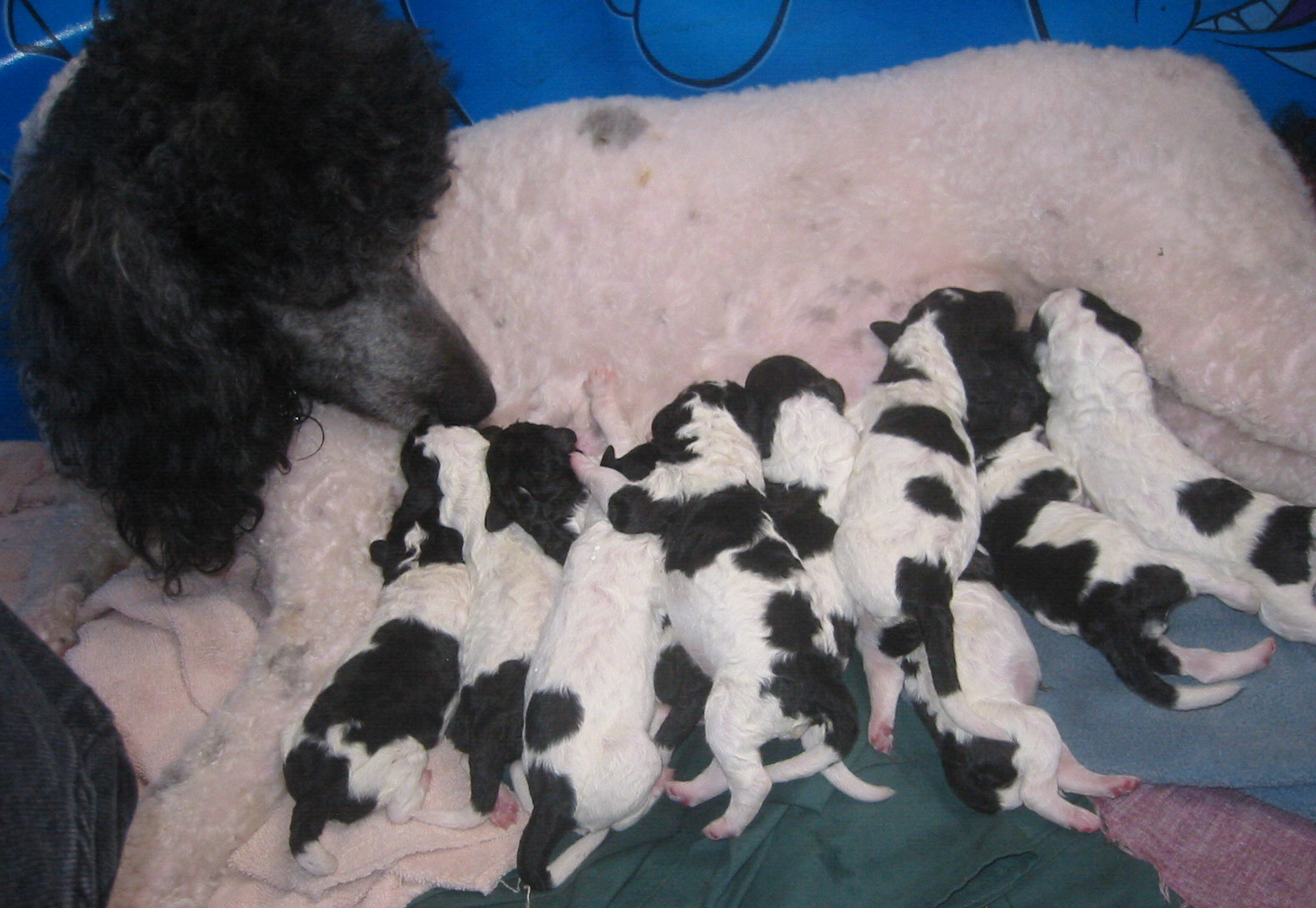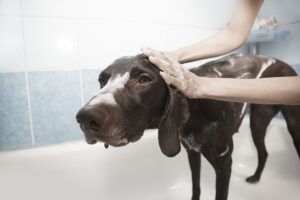 Grooming is a practice that should begin as soon as a puppy or dog is brought into your home. It is very important to get your dog used to being touched around its face, mouth, paws, tail, ears, and belly. Remember that your dog will be handled by a veterinarian for routine examinations and will routinely have to submit to nail cutting, ear cleaning, and other hands-on veterinary-related services. Grooming also reduces allergens and helps to lower the risk of infections and diseases.
Grooming is a practice that should begin as soon as a puppy or dog is brought into your home. It is very important to get your dog used to being touched around its face, mouth, paws, tail, ears, and belly. Remember that your dog will be handled by a veterinarian for routine examinations and will routinely have to submit to nail cutting, ear cleaning, and other hands-on veterinary-related services. Grooming also reduces allergens and helps to lower the risk of infections and diseases.
Over time, your dog will perceive daily combing and brushing as another form of attention and affection, and even the most resistant canines will come around and begin to enjoy the personal one-on-one session. Here’s a trick I like to use: I brush my dogs for a few minutes before going for a walk. If followed up by something fun, it becomes a routine and an incentive to be groomed.
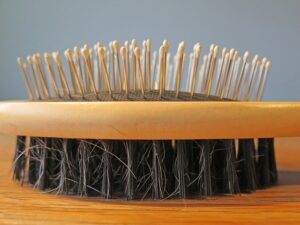
As a professional trainer, I’m often asked how to groom a dog that freaks out whenever they see the brush. I always recommend taking “puppy steps.” Start by simply using your hands instead of a brush. Always work with your dog when you’re calm and relaxed. If you are stressed and irritated, your dog will pick up on it and become agitated. Try holding a chew toy in one hand to distract your dog while you start by stroking your dog with your other hand. Then, start using the back of a brush by covering the bristles with one hand, again while distracting your dog with your other hand.
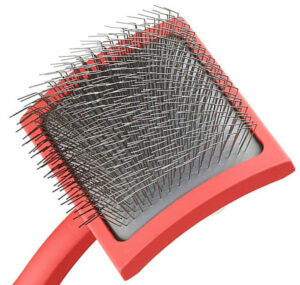 I am very against using what is referred to as a “slicker brush.” For those unfamiliar with this term, it is a brush with bent, pointy, pin-like wires that should be used by professionals. It may work great on a poodle with a full coat or a heavy-coated Great Pyrenees, but it can be extremely irritating and even painful to a short-haired dog or young puppy. If those wire bristles touch your puppy’s skin, it will feel like brushing it against your arm. If you hurt your dog while trying to teach him to appreciate being groomed, it will be taking a step backward.
I am very against using what is referred to as a “slicker brush.” For those unfamiliar with this term, it is a brush with bent, pointy, pin-like wires that should be used by professionals. It may work great on a poodle with a full coat or a heavy-coated Great Pyrenees, but it can be extremely irritating and even painful to a short-haired dog or young puppy. If those wire bristles touch your puppy’s skin, it will feel like brushing it against your arm. If you hurt your dog while trying to teach him to appreciate being groomed, it will be taking a step backward.
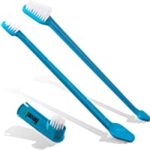 Get your dog used to dental cleanings by using your finger first if necessary. There are toothbrushes for dogs that are made to cover your index finger, much like a plastic finger cot, and small, slim brushes for smaller breed dogs. Tarter that builds around the gums and causes gum disease can also lead to major medical issues like heart disease. Talk to your veterinarian about professional cleanings for your dog’s teeth and how to do home care. Only use toothpaste made specifically for dogs. Look for a brand that is “enzymatic.” Numerous “dental chews” for dogs help eliminate tartar buildup. Ask your veterinarian to recommend the best dental chews for your dog. Be sure to talk to your veterinarian if your dog has “doggy breath.”
Get your dog used to dental cleanings by using your finger first if necessary. There are toothbrushes for dogs that are made to cover your index finger, much like a plastic finger cot, and small, slim brushes for smaller breed dogs. Tarter that builds around the gums and causes gum disease can also lead to major medical issues like heart disease. Talk to your veterinarian about professional cleanings for your dog’s teeth and how to do home care. Only use toothpaste made specifically for dogs. Look for a brand that is “enzymatic.” Numerous “dental chews” for dogs help eliminate tartar buildup. Ask your veterinarian to recommend the best dental chews for your dog. Be sure to talk to your veterinarian if your dog has “doggy breath.”
If you have a hair-coated rather than fur-coated breed of dog, like a Maltese, Poodle, or Shih Tzu, you are probably all too familiar with the tearing stains that pool around their eyes. Please do not pull at it when it’s hard, dry, and crusty. A little warm water on a cotton pad will easily and quickly soften and remove the debris in the corner of their eyes.
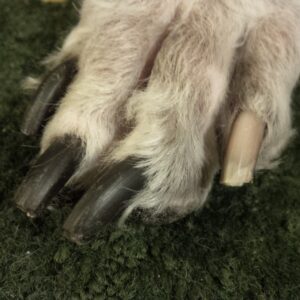 Ears and nails are two things that you should discuss with your vet. Dogs’ nails have a “quick.” If you cut the nail too short, it will bleed, and not just a little! It is also painful for your dog. Make sure you have “styptic powder” on hand. It’s available at all dog supply stores and will stop nail bleeding. Of course, it’s much easier to see the quick on pink nails than on black ones. If you would rather not cut your dogs’ nails yourself, you can have a vet tech or professional groomer do it for a nominal fee, probably without an appointment.
Ears and nails are two things that you should discuss with your vet. Dogs’ nails have a “quick.” If you cut the nail too short, it will bleed, and not just a little! It is also painful for your dog. Make sure you have “styptic powder” on hand. It’s available at all dog supply stores and will stop nail bleeding. Of course, it’s much easier to see the quick on pink nails than on black ones. If you would rather not cut your dogs’ nails yourself, you can have a vet tech or professional groomer do it for a nominal fee, probably without an appointment.
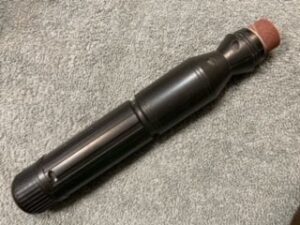 A tool known as a Dremel is specifically made for filing your dog’s nails. It is not expensive and is rather easy to use. I prefer to cut just the tip of the nails and then finish with the Dremel. This method reduces the chance of cutting your dog’s nails too short and smooths the nails to reduce scratching furniture or wooden floors. If your dog scratches an itch, especially if he has allergies, it is beneficial to prevent irritated skin from scratching with jagged, rough nails.
A tool known as a Dremel is specifically made for filing your dog’s nails. It is not expensive and is rather easy to use. I prefer to cut just the tip of the nails and then finish with the Dremel. This method reduces the chance of cutting your dog’s nails too short and smooths the nails to reduce scratching furniture or wooden floors. If your dog scratches an itch, especially if he has allergies, it is beneficial to prevent irritated skin from scratching with jagged, rough nails.
 Cleaning your dog’s ears is not the same method used to clean human ears. Please have your veterinarian show you how to do it to ensure safety and health. Breeds like Poodles, Spaniels, Maltese, Beagles, or any breed with long floppy ears, especially long coated dogs, require more ear cleaning and care. Some breeds also require hair removal from the inside of their ears to reduce the accumulation of debris and avoid possible infection. Check your dog’s ears routinely for any accumulation of debris, discoloration, redness, or unpleasant odor.
Cleaning your dog’s ears is not the same method used to clean human ears. Please have your veterinarian show you how to do it to ensure safety and health. Breeds like Poodles, Spaniels, Maltese, Beagles, or any breed with long floppy ears, especially long coated dogs, require more ear cleaning and care. Some breeds also require hair removal from the inside of their ears to reduce the accumulation of debris and avoid possible infection. Check your dog’s ears routinely for any accumulation of debris, discoloration, redness, or unpleasant odor.
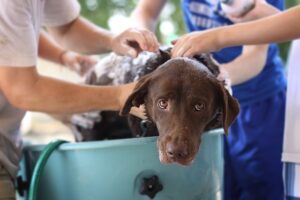 It should be noted that some years back, it wasn’t uncommon for people to bathe their dogs only once a year. I like to bathe my dogs, which have hair and not fur, once a week and use a super gentle, lavender, no-tear shampoo and conditioner, making sure I comb the conditioner through the hair. I prefer bathing my dogs in a bathtub and using a handheld hose. This method provides greater safety and is easier and less messy. If the tub is slippery, line the bottom with a towel.
It should be noted that some years back, it wasn’t uncommon for people to bathe their dogs only once a year. I like to bathe my dogs, which have hair and not fur, once a week and use a super gentle, lavender, no-tear shampoo and conditioner, making sure I comb the conditioner through the hair. I prefer bathing my dogs in a bathtub and using a handheld hose. This method provides greater safety and is easier and less messy. If the tub is slippery, line the bottom with a towel.
Filling the tub with water is not recommended. Here’s a great tip from a groomer: Never bathe a matted dog. The mats will get worse. Here’s another tip: Add warm water to make a mixture of half water and half shampoo. It will be easier to shampoo in and wash off.
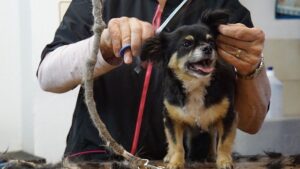 However, even if you do all the above, nothing replaces good professional grooming by someone you trust. Your dog will look good, feel better, and smell great!
However, even if you do all the above, nothing replaces good professional grooming by someone you trust. Your dog will look good, feel better, and smell great!
I have made a habit of using non-scented baby wipes to clean my dogs before they come back into the house from outside. They are immediately cleaned after urinating and defecating, and their paws are cleaned before entering the house. They have become very used to this extra step in grooming, and they will wait one by one for their turn to be cleaned.


